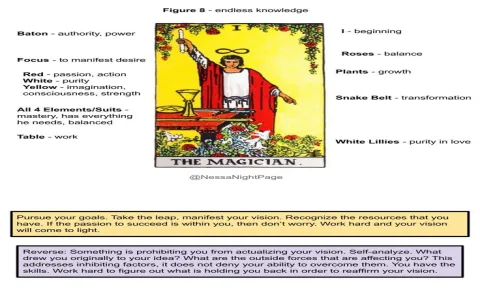Man, let me tell you, I’ve been there. That feeling of hitting zero, where you look around and everything you built just looks like a pile of dusty bricks. The Ten of Swords isn’t some metaphor for a tough Monday; it’s when you are literally lying on the ground, wondering how eleven things managed to stab you in the back at the exact same time. It feels like total betrayal, or just complete, unavoidable failure. I know this because about three years ago, I didn’t just pull the Ten of Swords in a reading; I was living it, every single day.
I had poured everything I had into this small, consulting firm—slept four hours a night, ate cereal for dinner, skipped holidays. We had one huge contract, the kind that paid the rent and then some. I thought we were golden. Then, out of nowhere, they pulled the plug. No warning, just a terse email late on a Friday afternoon: “Effective immediately, services no longer required.” That was the first sword. Within two weeks, my biggest supplier hiked their prices so high it wiped out my margins completely. Second sword. Then, my partner—the guy I trusted the most—decided that was the perfect moment to take a “sabbatical” and leave me holding the bag. That was the third, fourth, and fifth swords, all shoved in deep.
I was wiped out. Financially, emotionally, completely flattened. I spent a week just staring at the ceiling. But eventually, you realize that if you’re still breathing, you have to get up. I decided to treat this literal rock bottom as the ultimate Ten of Swords moment and actively turn it into something new. I documented the whole process. Here’s how I tackled it, broken down into the three ways I forced myself to start moving again.
Phase 1: Taking Inventory of the Wreckage
Most people run from the pain. I decided to sit right in the middle of it. This was the first way I embraced the new beginning: I cataloged the damage without self-pity.
I grabbed a huge notepad—the kind you tear sheets off—and I wrote down every single thing that failed. Not “who failed me,” but what systems or choices I made that allowed the failure to happen. This wasn’t about blame; it was forensic accounting for my life. I examined the books, tracked down the errors in my contract management, and acknowledged that my over-reliance on that single massive client was stupid, not just unlucky.
- I documented the actual financial losses, down to the penny. Seeing the raw numbers grounded the emotional hysteria.
- I listed the personal habits that had burned me out (the lack of sleep, the skipping of meals).
- I identified the exact moments I ignored the gut feeling that things were shaky.
When I finished, I had a clear map of the mess. It didn’t look like a tragedy anymore; it looked like a terrible, expensive business plan gone wrong. That shift from “tragedy” to “data set” was crucial.
Phase 2: The Great Separation and Fire Sale
The second step was about creating empty space. You can’t build a new house on top of the old foundation, especially when the old foundation is rotten. This was about separating myself from the identity of the failure.
I started small. I had boxes of old documents, unused inventory, and a stack of expensive business cards that mocked me every time I looked at them. I shredded the documents, I donated the equipment I couldn’t sell, and I literally burned the business cards in a metal tray in the backyard. It sounds dramatic, but watching the smoke curl away was incredibly cathartic. It signaled to my brain that the old operation was officially dead.
Then came the hard part: dealing with the people. I called the remaining clients and contacts and clearly explained that I was shutting down operations, but I offered references and connections to people who could help them immediately. By taking responsibility and offering help, I was reclaiming my reputation, not running from it. It was incredibly freeing to stop pretending I could revive the corpse.
Phase 3: The Tiny, Non-Negotiable Step Forward
The third way to embrace the new beginning is to stop focusing on the massive mountain you need to climb and just take one small step away from the grave.
When you’re at the Ten of Swords, thinking about a five-year plan is paralyzing. So I scrapped the five-year plan. I created a three-day plan. What could I achieve in the next 72 hours that had absolutely nothing to do with the failed business?
- Day 1: I signed up for a basic online course in something totally unrelated—web design fundamentals.
- Day 2: I cleaned out my office, repainting the walls white (a literal blank slate).
- Day 3: I reached out to three people I hadn’t spoken to in two years—not for a job, but just to genuinely catch up.
Each action was small, but they created momentum. I wasn’t trying to replace the massive income I lost; I was just proving to myself that I could still initiate action and follow through on a promise. The key was that these actions were non-negotiable. I didn’t allow myself to think about the past while doing them. That white wall, that new skill, that renewed connection—they were solid proofs that the ending had finished, and the new story had actually started.
The lesson here is simple: when the Ten of Swords hits, you are free. You have nothing left to lose, because it’s already gone. I didn’t bounce back overnight; it took months of grinding. But I used the pain as the fuel. By forcing myself to take inventory, let go of the old identity, and commit to tiny, unrelated steps, I discovered a whole new path that was far more sustainable and, honestly, a lot less stressful than the one that nearly killed me. You get to decide what the empty space looks like. Don’t waste the clearing.






